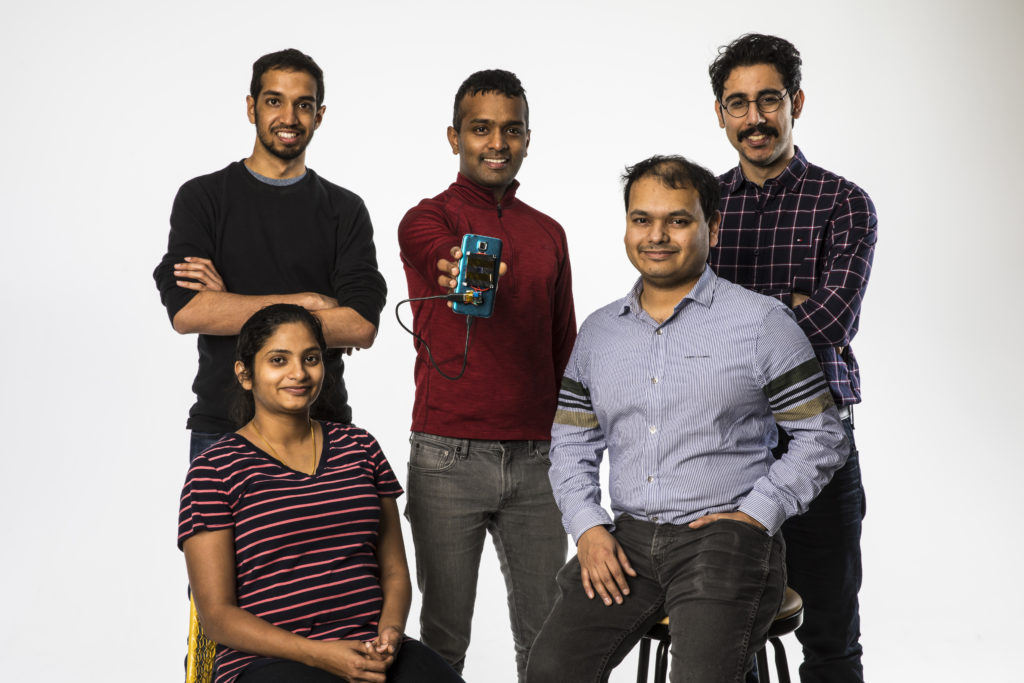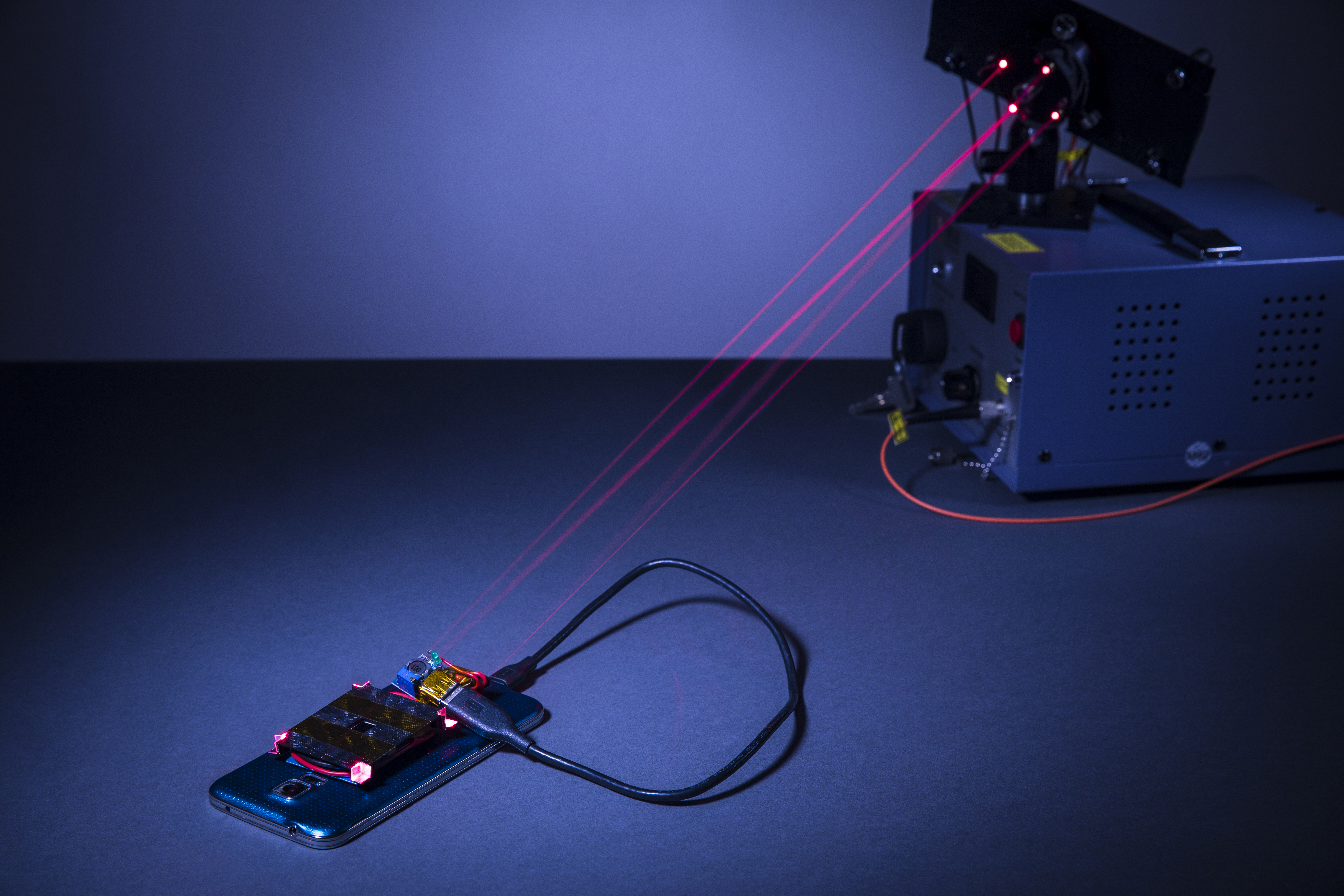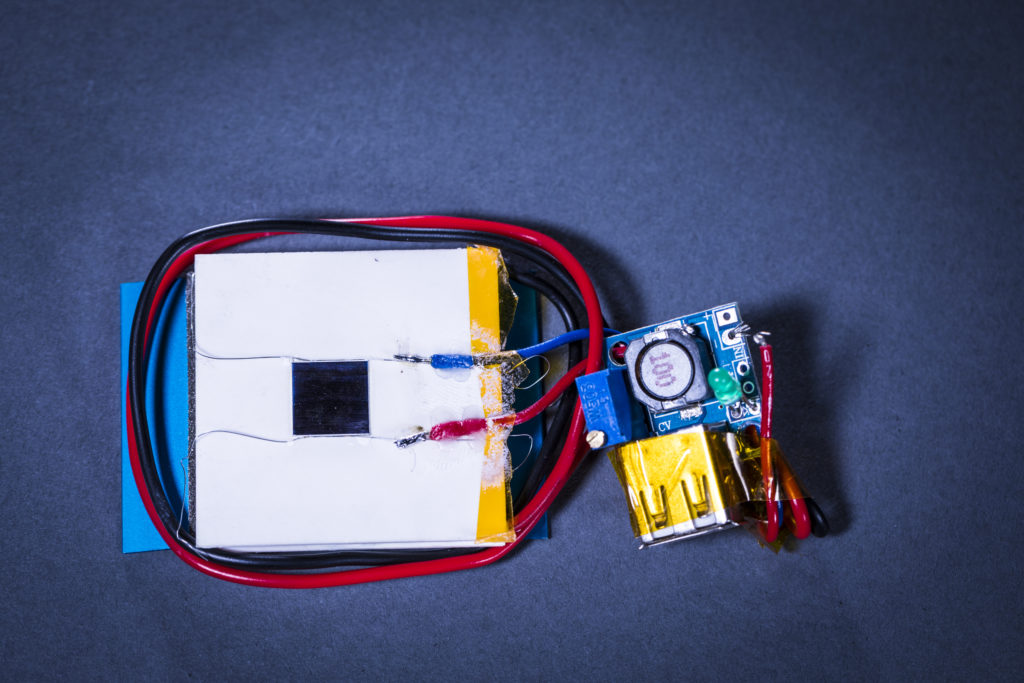Despite the rapid evolution of the technology, people are still used to charge their smartphone by plugging them into an outlet. This method might very soon be obsolete. Indeed, engineers from Univeristy of Washington discovered a new way to wirelessly charge a smartphone using a laser.

So, the idea of the team was to make an invisible beam from a laser charge a smartphone in safety conditions. To achieve that, the engineers mounted a thin power cell to the back of a smartphone, which charges the smartphone using power from the laser.
To ensure the realization of the experience in safety conditions, a metal on the smartphone enables to remove excess heat from the laser. Furthermore, a reflector-based mechanism aimed to shut off the laser if someone had moved in the charging zone.

“Custom 3D printed “retroreflectors” placed around the power cell on the smartphone reflect the guard beams back to photodiodes on the laser emitter. The guard beams deliver no charge to the phone themselves, but their reflection from the smartphone back to the emitter allows them to serve as a “sensor” for when a person will move in the path of the guard beam. The researchers designed the laser emitter to terminate the charging beam when any object — such as part of a person’s body — comes into contact with one of the guard beams. The blocking of the guard beams can be sensed quickly enough to detect the fastest motions of the human body, based on decades of physiological studies.”
Last, thin aluminium strips on the smartphone’s back were placed around the power cell to ensure that the charging beam does not overheat the device.

According to the team, “these strips act as a heatsink, dissipating excess heat from the charging beam and allowing the laser to charge the smartphone for hours. They even harvested a small amount of this heat to help charge the smartphone — by mounting a nearly-flat thermoelectric generator above the heatsink strips.”
The smartphone is probably just an example of how this technique might work. The same technique might also enable to charge cameras, tablets and even desktop computers.
For further information about 3D Printing, follow us on our social networks and subscribe to our newsletter!
//pagead2.googlesyndication.com/pagead/js/adsbygoogle.js
(adsbygoogle = window.adsbygoogle || []).push({});





